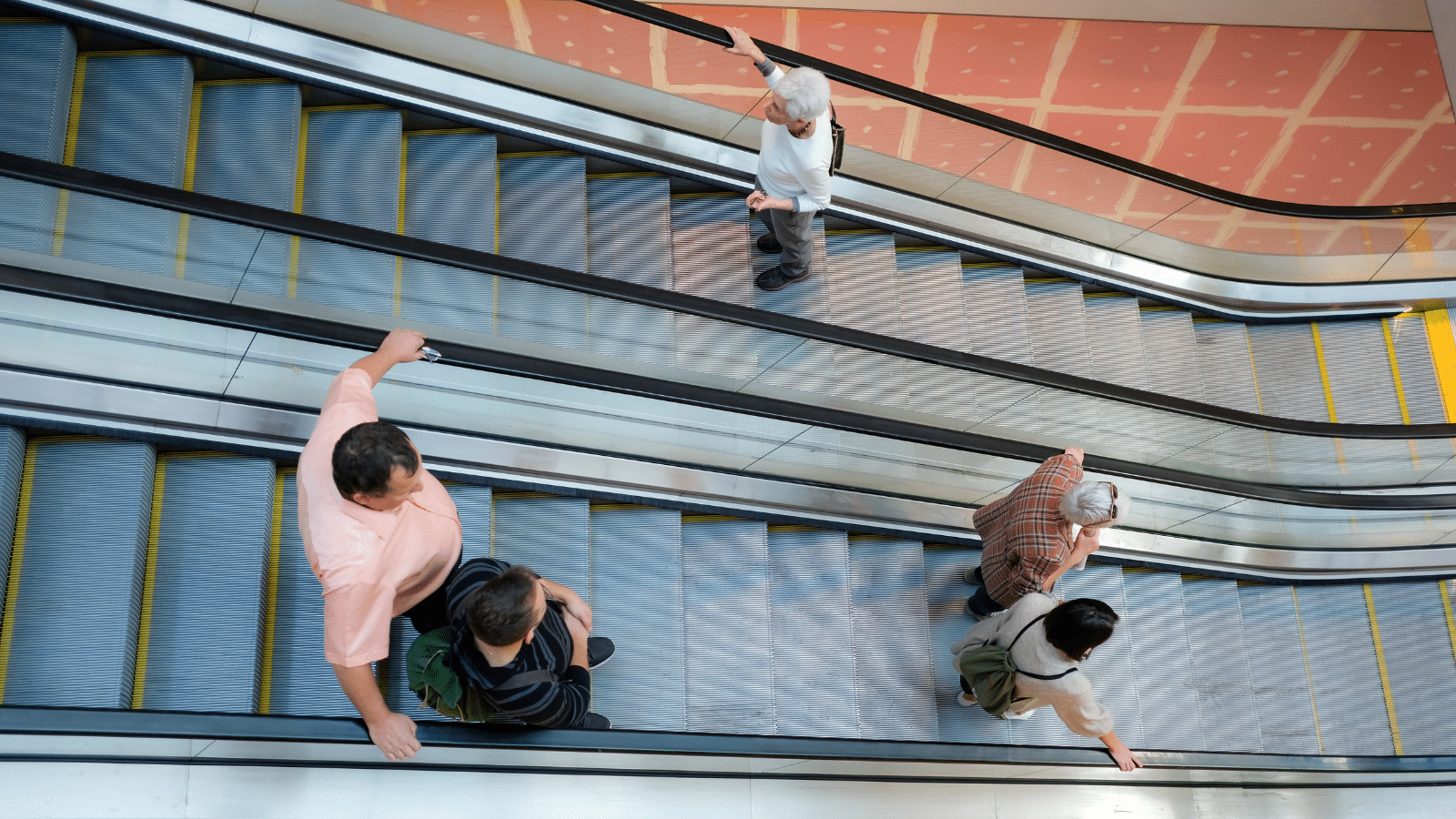In this article – a collaboration between Inclusive Change and Aspect – we explore the innovative solutions that Australian retailers are using to create accessible and inclusive shopping experiences by using complimentary sensory strategies that improve the customer experience and meet the needs of all shoppers.
The article has been informed by feedback from the lived experiences of customers representing a range of neurotypes, and market research conducted by Inclusive Change and Nature.
One in five Australians has a disability, of which 80-90% are non-apparent. An estimated 20% of the population identify as neurodivergent: people who have a neurology, (or brain wiring), that diverges from the majority. The neurodivergent umbrella includes – but is not restricted to – autism, dyspraxia, dyslexia, ADHD and sensory processing conditions. Neurodivergent people navigate barriers in everyday scenarios, including shopping and travel, that have been designed for the neurotypical population.
The physical space
“Shopping at a physical store is a sensory nightmare for me. I do most of my grocery shopping online to conserve my energy for more important things, as recovering can impact me the following day. I enjoy shopping for fun occasionally but have to reduce my activities before and after. Ideally, I want shopping to feel like an enjoyable, relaxing experience, with lots of natural light, soundproofing, places to sit and cosy cafes. I have disposable income which I like to spend on luxury items, and chances are if shopping centres were more sensory-friendly, and stores didn’t blast their music I would go shopping more. I’m sure there are a lot of people like me out there who would bring money in but are dissuaded from coming because they struggle to function in an environment that wasn’t built for them”.
Rebecca Street, Autistic Consultant
Why is ‘sensory-friendly’ important?
The layout and design of a physical retail space plays a significant role in the experience of customers who have heightened sensitivity to sensory input because their neurology does not naturally filter out sensory inputs.
People who identify as neurodivergent experience the senses differently to neurotypical people. In fact, 95% of autistic people have a sensory experience different to non-autistic people. While these differences can bring great joy, they can also be distracting, stressful, overwhelming, and even painful. It comes as no surprise that difficulty with sensory input is a common barrier for neurodivergent people and their families engaging in public spaces.
However, being ‘sensory friendly’ involves more than turning the lights and the music down – the sensory experiences of neurodivergent people is much more complex.
Customers who are hyper-sensitive to sensory input pick up stimuli that many people don’t even notice. This includes bright / flashing lights, reflective glare, loud noises, multiple overlapping sounds, different textures, and smells, crowding and accidental touch from other people.
To regulate their systems, it is common for neurodivergent customers to plan for overwhelming environments, by:
- Wearing clothing such as sunglasses, hoodies or other clothing that blocks out bright lights
- Utilising accessories such as earphones and sensory tools (such as fidget spinners, slinkies)
- Using self-checkout over assisted registers to minimise social interaction or verbal communication
- Finding private places like bathrooms or changerooms or utilising quiet spaces if they are available
- Avoiding the retail space altogether, opting to buy online or delaying purchases may be the result of an experience that was not deemed safe or accessible.
What are retailers doing today?
Time-Limited opportunities
Some organisations, like Kmart, Coles and Woolworths, as well as Westfield centres provide ‘Quiet Hours’. Quiet Hours are time-limited durations during which the store environment is adapted. Quiet Hours often include:
Turning off music and machinery, minimising announcements over the store audio system
Adapting or halting some store tasks temporarily (such as limiting trolley collection and shelf re-stocking)
Reducing or removing incense, perfumes, and other olfactory inputs
Educating other customers about the need and benefit of Quiet Hours i.e. signage, screens, and social media.
Matt Oastler from Aspect says “We’ve heard time and time again from customers that they wouldn’t have come to the environment at all without the confidence that opportunities like Quiet Hours give them. We often hear that attending an environment during Quiet Hour helps people to build the familiarity and confidence with an environment, allowing them to re-visit at a time that works best for them”.
Permanent adaptations
Some organisations are also moving towards making sensory-friendly environments ‘business as usual’ by adapting existing spaces to be less sensory overwhelming, including:
- reducing glare by using less shiny reflective surfaces and replacing them with a matte finish (i.e. floor tiles, tabletops)
- replacing existing halogen lighting (which has a strong visual flicker, and makes a buzzing sound) with warm, diffused, and recessed LED lighting
- adding soundproofing and soft furnishings (like rugs and couches)
- reducing loud, multiple, or unexpected sounds (like hand-dryers, multiple music sources, machinery, and loud in-store radio)
- providing booking, ticketing, and queueing systems that reduce waiting and crowding
- replacing or reducing strong chemical smells (like incense, perfumes, and air fresheners) with low smell alternatives, and providing adequate ventilation
- providing Visual Stories or Sensory Maps that help people to plan their journey and know what to expect.
Retailers are increasingly including these considerations in any new buildings or fit outs of existing spaces.
Quiet Rooms and Sensory Friendly Amenities
Some organisations, like Stockland, are developing Quiet Rooms and Sensory Friendly amenities in their retail centres. Sensory Friendly Amenities are spaces that have limited smells and sounds, and adapted lighting that reduce the potential for sensory overwhelm. For bathrooms, this includes replacing hand-dryers with paper towel and air fresheners with low-scent alternatives.
Quiet Rooms are designed for people needing a short time away from the stress and overstimulation of a busy environment. A Quiet Room should feel relaxing and have limited / low sensory input to support people to regulate in private. They should be available for anyone who needs them.
Quiet Rooms/Spaces are an increasingly important option for both adults and children who have a disability, sensory-processing difference, anxiety, or medical condition – including migraines. They are being implemented by sport stadiums, venues, shopping centres and airports.
For more information, www.inc-change.com and www.autismspectrum.org




















